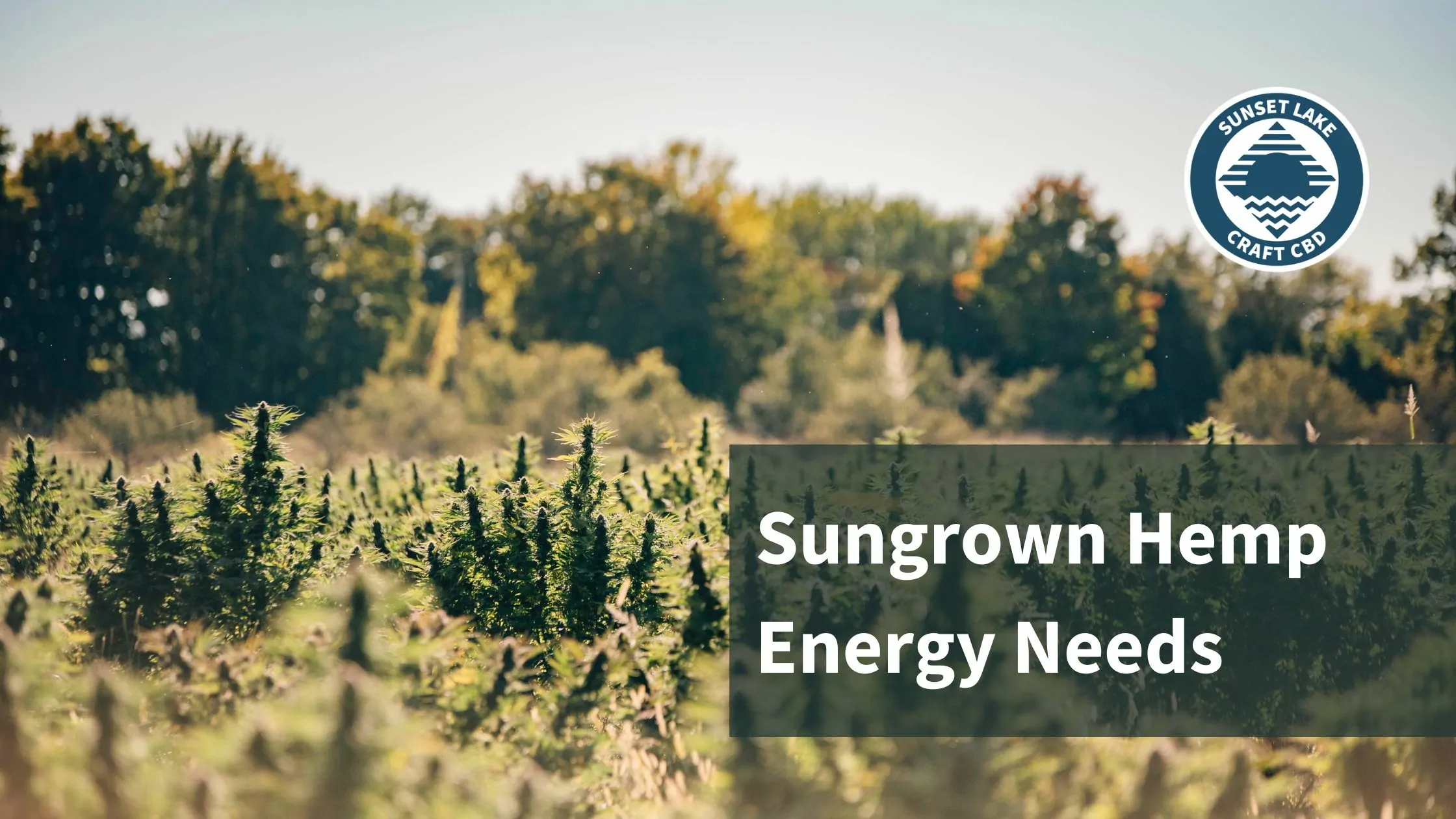No products in the cart.
CBD With A Conscience: Energy Needs Of Indoor Vs. Sungrown Hemp

It takes a lot of energy to grow good, smokable hemp. Whether the energy comes from fuel, electricity, human, or otherwise, we all should be more aware of what it takes to grow hemp the next time we shop online for CBD. In this post, we’ll cover the differences between the energy consumed to grow indoor vs. sungrown hemp and where we get that energy.
What Is Sungrown Hemp?
Sungrown (or sun-grown) hemp is grown and finished outdoors, planted in soil, and subject to the sun. That might sound obvious, but “sungrown” isn’t interchangeable with “outdoor.” According to industry terminology, sungrown is a subcategory of outdoor hemp and can be grown in pots, subject to light deprivation, and more.
Sungrown hemp reaches maturity in the ground under the full sun. It’s exposed to beneficial bacteria via the soil and is more resilient to molds and mildew. Sungrown hemp also develops more terpenes as a natural self-defense mechanism against pests.
The Energy Needs Of Sungrown Hemp
If done correctly, sungrown hemp is more cost-effective and less energy-intensive than either greenhouse or indoor hemp. Because sungrown hemp utilizes soil, rain, and the sun, the latter two of which are essentially free, the price per milligram of sungrown CBD is usually lower than its alternatives.
That’s not to say that sungrown hemp doesn’t require power to make the best product possible. The following are the largest energy inputs needed for sungrown hemp cultivation.
Fuel
Outdoor farming requires fuel to power machinery, small engines, and farm vehicles (at least for now.) Sungrown hemp is no different. Whether using a weedwhacker to keep the rows neat or driving a pickup full of bud back to the drying shed, you’ll burn some carbon-intensive fuels.
Irrigation
While rainwater is free and preferred by farmers, especially during hemp’s vegetative phase, it’s not always the most reliable water source for your crop. That’s where irrigation comes in.
On Sunset Lake Farms, we use a simple network of plastic drip lines to feed water to our hemp plants when we experience dry summer days. Besides the plastic used to make the drip lines, we do use a small motor to pump water from our source to the plants.
Drying & Curing
The most crucial phase of cropping out hemp is drying. If done incorrectly, mold and mildew can ruin your entire crop. To properly dry and cure sungrown hemp you need to store it in a darkened, humidity-controlled environment.
Maintaining the ideal drying environment takes electricity and a closed environment, both of which require energy and space.
The Energy Needs of Indoor Hemp
Indoor hemp can encapsulate a lot of different growing techniques including hydroponic, container growing, and “sea of green”— all of them have their pros and cons. For this piece, we’ll use indoor cultivation as an umbrella term for hemp grown using artificial light sources.
Power Consumption
When you move plants that have evolved to grow outside indoors, you need to maintain a favorable growing environment and feed them with lights that mimic the sun. Not just one light though. Commercial grow rooms require rows of lights per square foot of hemp— and that requires a ton of power.
According to the Northwest Power and Conservation Council (NPCC), the average indoor cannabis grow room (a commercial cultivation room set up for cannabis and hemp) consumes between 2,000 and 3,000 kilowatt hours (kWh) per pound of finished cured material produced.
Most of that energy goes towards lighting, temperature, and humidity control. Take that and multiply that by several pounds of hemp per indoor grow and that power consumption piles up.
For reference, the average American household uses about 30 kWh per day, meaning that you could run your household for 100 days on the same amount of electricity that it takes to produce one pound of indoor cannabis.
Water Purification
Indoor hemp is more susceptible to disease and infection because it isn’t regularly exposed to the elements, the water that indoor hemp is fed needs to be more tightly controlled. Pumping in clean water and purifying it further can be both energy and water-intensive.
Related: CBD With A Conscience: Is Sungrown Hemp More Potent Than Indoor?
Drying & Curing
Just like sungrown hemp, you need to properly dry and cure indoor hemp to ensure quality and prevent mold and mildew. Maintaining the ideal drying environment takes electricity and a closed environment, both of which require energy and space.
Indoor vs. Sungrown Hemp
While indoor hemp cultivation does have its pros: year-round harvesting and consistency, it also comes with a fair amount of energy baggage.
Is indoor hemp 18 times better than sungrown hemp? No? Then it becomes harder to justify the fact that indoor hemp cultivation consumes 18 times more energy per gram than sungrown hemp.
If you prefer greener, more environmentally-friendly CBD hemp flower, support your local sungrown farmer.

